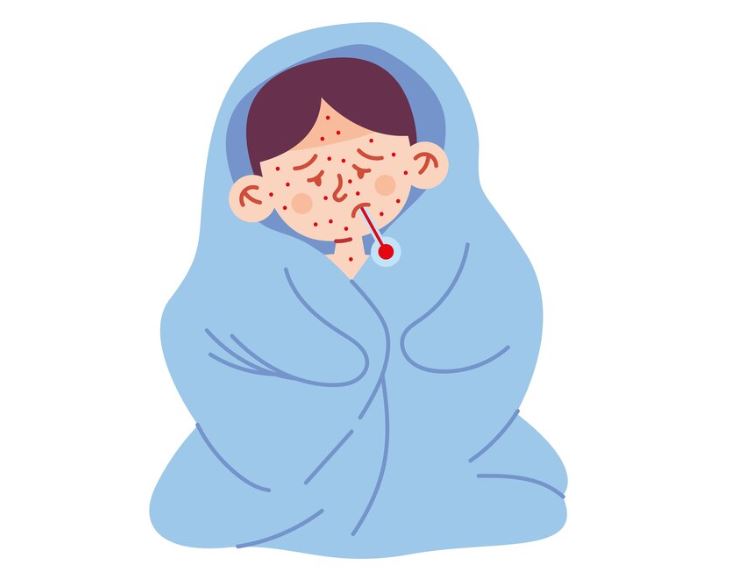Kawasaki disease is a rare condition that primarily affects children under the age of five. It is characterized by inflammation of the blood vessels throughout the body. Despite being rare, it can lead to serious complications if not diagnosed and treated promptly. In this article, we’ll delve into the details of Kawasaki disease, including its symptoms, causes, diagnosis, and treatment options.
What is Kawasaki Disease?
Kawasaki disease, also known as mucocutaneous lymph node syndrome, was first identified in the 1960s by Dr. Tomisaku Kawasaki in Japan. It primarily affects children, with boys being slightly more susceptible than girls. The exact cause of Kawasaki disease is unknown, but it is believed to involve a combination of genetic predisposition, environmental factors, and an abnormal immune response.
Symptoms of Kawasaki Disease
The symptoms of Kawasaki disease can vary widely from one child to another. However, the classic signs and symptoms include:
1. High Fever
One of the hallmark symptoms of Kawasaki disease is a persistent high fever, typically lasting for five or more days.
2. Rash
Children with Kawasaki disease often develop a rash, particularly on the trunk of the body. The rash may be red, raised, and may resemble a sunburn.
3. Red Eyes
Inflammation of the eyes, specifically the conjunctiva, can occur in Kawasaki disease, leading to redness and irritation.
4. Swollen Lymph Nodes
Enlargement of the lymph nodes, particularly in the neck region, is common in Kawasaki disease.
5. Swollen Hands and Feet
Many children with Kawasaki disease experience swelling of the hands and feet, often accompanied by redness and tenderness.
6. Peeling Skin
As the fever subsides, some children may experience peeling of the skin, particularly on the hands and feet.
Causes of Kawasaki Disease
The exact cause of Kawasaki disease remains unknown. However, researchers believe that it may involve a combination of genetic factors and environmental triggers. Some theories suggest that infectious agents or toxins may play a role in triggering the abnormal immune response seen in Kawasaki disease.
Diagnosis of Kawasaki Disease
Diagnosing Kawasaki disease can be challenging, as there is no specific test for the condition. Instead, healthcare providers rely on a combination of clinical symptoms and laboratory tests to make a diagnosis. Common tests used in the diagnosis of Kawasaki disease include:
1. Physical Examination
Doctors will conduct a thorough physical examination to look for characteristic signs of Kawasaki disease, such as a rash, red eyes, and swollen lymph nodes.
2. Blood Tests
Blood tests may be performed to check for signs of inflammation, such as an elevated white blood cell count and elevated levels of C-reactive protein.
3. Echocardiogram
An echocardiogram may be performed to evaluate the function of the heart and look for any abnormalities in the coronary arteries.
Treatment of Kawasaki Disease
Early treatment of Kawasaki disease is essential to reduce the risk of complications. The primary goal of treatment is to reduce inflammation and prevent damage to the blood vessels. Treatment may include:
1. Intravenous Immunoglobulin (IVIG)
Intravenous immunoglobulin is a medication that helps reduce inflammation and prevent coronary artery abnormalities in Kawasaki disease.
2. Aspirin
High doses of aspirin may be given to reduce fever and inflammation in children with Kawasaki disease. However, aspirin should be used with caution in children due to the risk of Reye’s syndrome.
3. Supportive Care
In addition to specific treatments, children with Kawasaki disease may require supportive care to manage symptoms such as fever and pain.
Conclusion
Kawasaki disease is a rare but serious condition that primarily affects young children. Early recognition and treatment are essential to prevent complications such as coronary artery abnormalities. If you notice any concerning symptoms in your child, such as a prolonged fever or rash, it’s important to seek medical attention promptly.
FAQs (Frequently Asked Questions)
1. Can adults get Kawasaki disease?
- While Kawasaki disease primarily affects children, cases have been reported in adults, although they are rare.
2. Is Kawasaki disease contagious?
- No, Kawasaki disease is not contagious. It is believed to be caused by a combination of genetic and environmental factors.
3. Are there any long-term complications of Kawasaki disease?
- In some cases, Kawasaki disease can lead to complications such as coronary artery abnormalities, which may increase the risk of heart problems later in life.
4. Can Kawasaki disease recur?
- Yes, Kawasaki disease can recur in some children, although it is rare.
5. How can I reduce the risk of Kawasaki disease in my child?
- Since the exact cause of Kawasaki disease is unknown, there are no specific measures to prevent it. However, early recognition and treatment can help reduce the risk of complications.
